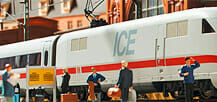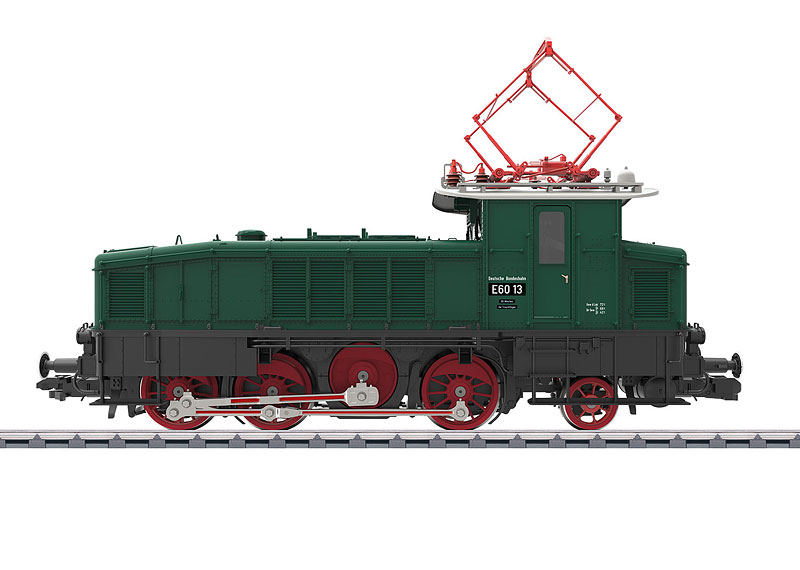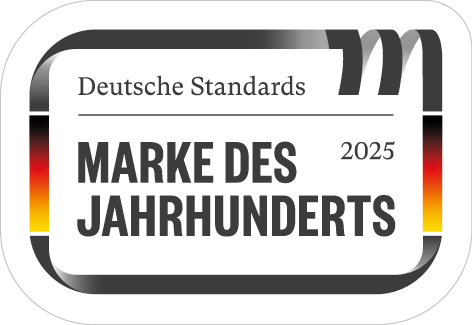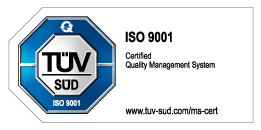Electric Locomotive
Treasured Exotic Locomotives
Remarkable form, unusual task: the E 60 – one of the few electric switch engines in German railroad history. Placed into service in 1927, they quickly acquired the nickname "Flat Iron" due to their long and short hoods. They acquired their unique look – small electric DR lanterns – in their characteristic shape in the small series down to road number E60 13.
Prototype: German Federal Railroad (DB) class E 60 as it looked in Era IIIa. Switch engine with cab windows as they originally looked in real life, without switching platforms, type SBS 10 pantograph, 2 DB design headlights, and 1 marker light. Green basic paint scheme. Road number E 60 13, based in Treuchtlingen.
Most Important Facts
| Article No. | 55605 |
|---|---|
| Gauge / Design type | 1 / |
| Era | III |
| Kind | Electric Locomotives |
Check with your local dealer Find Dealer
Highlights
- At a glance:
- Completely new tooling constructed of metal.
- Highly detailed model with many separately applied parts.
- Small electric DRB lanterns like the prototype.
- Pantograph servomotorisch angetrieben (realistisch heb- und senkbar)
- Pantograph powered by a servomotor (can be raised and lowered).
- Newly developed remote-controlled Telex coupler front and rear.
- High-tension cable leading into the cab.
- Exactly detailed cab with interior details.
- Steps constructed of textured sheet metal.
- Cooling lines reproduced on all sides of the locomotive.
- No rain gutter above the door.
- Prototypical clamping shoes.
- Upper marker light at each end that can be controlled separately.
- Access hatches on the motor hood.
- Propulsion prototypically by means of a jackshaft.
-
Product description
Model: The locomotive is completely new tooling. The frame and locomotive body are constructed of metal. The locomotive has an mfx digital decoder, controlled high-efficiency propulsion, and extensive sound functions. It can be operated with AC power, DC power, Märklin Digital, or DCC. All of the driving axles are powered by means of a centrally mounted powerful motor. The type SBS 10 double-arm pantograph with a single contact strip can be raised and lowered in digital operation by means of a motor. The white dual headlights are LEDs. They will work in conventional operation, and can be controlled digitally.
An upper marker light also comes on depending on the direction of travel. The cab has warm white LED lighting. The cab doors can be opened, there are interior details, and the cab has a figure of an engineer. The locomotive has metal grab irons and many other separately applied details: signs, antenna, windshield wipers, whistle, etc. The buffer beams have sprung buffers and separately applied brake lines. The locomotive has built-in, completely newly developed remote-controlled Telex couplers front and rear. The locomotive has factory-installed claw couplers that can be replaced by 2 prototype couplers included with the model. Minimum radius for operation 1,020 mm / 40-3/16".
Length over the buffers 35 cm / 13-3/4".Find more Märklin explanation videos on our YouTube Channel
Spare parts for our articles can be found here in our spare parts search.
One-time series.
-
Publications
- Summer New Items 2015 - Fall New Items 2015 - Product programme 2015/2016 - New items brochure 2016 - Product programme 2016/2017 - Product programme 2017/2018 - Product programme 2018/2019 - Product programme 2019/2020
-
Prototype information
The DRG E 60 Electric Locomotive "Clean locomotives for switching work at electrified stations" was the DRG's slogan in the Mid-Twenties in Bavaria. It ordered two electric locomotives in 1926 especially for the extended track layouts of the Munich stations in order to be able to use this smoke-free method of operation in switching work too. The DRG stipulated the use of as many components of the newly purchased E 52 and E 91 as possible in the interests of standardized spare parts inventory. The Winterthur diagonal rod drive with a jackshaft and three coupled wheel sets came from the E 91. The drive performance was provided by a double motor that was also used on the E 52 or E 91. Originally, the locomotives had a special design pantograph with two widely spaced contact strips to better bridge separation points in the catenary. The first two units were placed into service in 1927 as E 60 01 and 02. Several small run series followed by June of 1934, the E 60 03-14, which were also used in part at other Bavarian stations. In addition to switching work, the E 60 was also planned for local freight trains and transfer work. Its characteristic design with the two hoods, the rear one being long and the front one relatively short, quickly generated its nickname "Flat Iron". After the annexation of Austria, several units went starting in 1938 to the "Annexation Area" to Innsbruck, Kufstein, and Wörgl. All of the E 60 locomotives survived the war without extensive damage and the units still in Austria came back to Bavarian as part of a locomotive swap in 1945/46. In 1957/58, the DB had the locomotives fundamentally overhauled and updated. They thus were equipped with switching platforms above the buffers, additional windows, and new wiring. By 1964 the E 60 units (from 1968 on: 160) were only running again in Bavaria. Then came Heidelberg as a new home base. The first units to be retired were in 1977 and with the storage of road number 160 012 in June of 1983 switching service with electric locomotives on the DB also ended. Road numbers 160 009, 010, and 012 remain preserved as museum locomotives.
-
Digital Functions
Control Unit Mobile Station Mobile Station 2 Central Station 1/2 Central Station 3/2*
Mobile Station 2**Headlight(s) Pantograph control Electric locomotive op. sounds Locomotive whistle Interior lights Telex coupler on the front Front Headlights off Telex coupler on the rear Rear Headlights off Sound of squealing brakes off Direct control Bell Light(s) for Oncoming Train Letting off Air Operating sounds Whistle for switching maneuver * New features of the Central Station 2 (Part No. 60213, 60214 or 60215) with the software update 4.2
** New features of the Mobile Station 2 (Part No. 60657/66955) with the Software Update 3.55














